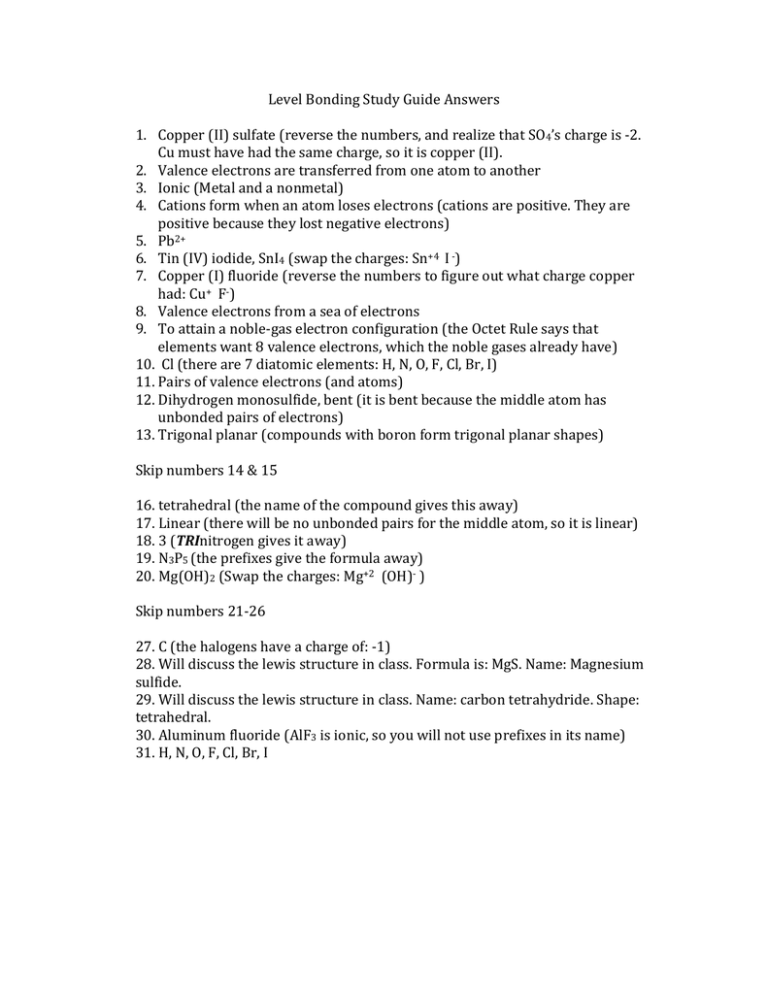Level Bonding Study Guide Answers Copper (II) sulfate (reverse the
advertisement

Level Bonding Study Guide Answers 1. Copper (II) sulfate (reverse the numbers, and realize that SO4’s charge is -2. Cu must have had the same charge, so it is copper (II). 2. Valence electrons are transferred from one atom to another 3. Ionic (Metal and a nonmetal) 4. Cations form when an atom loses electrons (cations are positive. They are positive because they lost negative electrons) 5. Pb2+ 6. Tin (IV) iodide, SnI4 (swap the charges: Sn+4 I -) 7. Copper (I) fluoride (reverse the numbers to figure out what charge copper had: Cu+ F-) 8. Valence electrons from a sea of electrons 9. To attain a noble-gas electron configuration (the Octet Rule says that elements want 8 valence electrons, which the noble gases already have) 10. Cl (there are 7 diatomic elements: H, N, O, F, Cl, Br, I) 11. Pairs of valence electrons (and atoms) 12. Dihydrogen monosulfide, bent (it is bent because the middle atom has unbonded pairs of electrons) 13. Trigonal planar (compounds with boron form trigonal planar shapes) Skip numbers 14 & 15 16. tetrahedral (the name of the compound gives this away) 17. Linear (there will be no unbonded pairs for the middle atom, so it is linear) 18. 3 (TRInitrogen gives it away) 19. N3P5 (the prefixes give the formula away) 20. Mg(OH)2 (Swap the charges: Mg+2 (OH)- ) Skip numbers 21-26 27. C (the halogens have a charge of: -1) 28. Will discuss the lewis structure in class. Formula is: MgS. Name: Magnesium sulfide. 29. Will discuss the lewis structure in class. Name: carbon tetrahydride. Shape: tetrahedral. 30. Aluminum fluoride (AlF3 is ionic, so you will not use prefixes in its name) 31. H, N, O, F, Cl, Br, I




